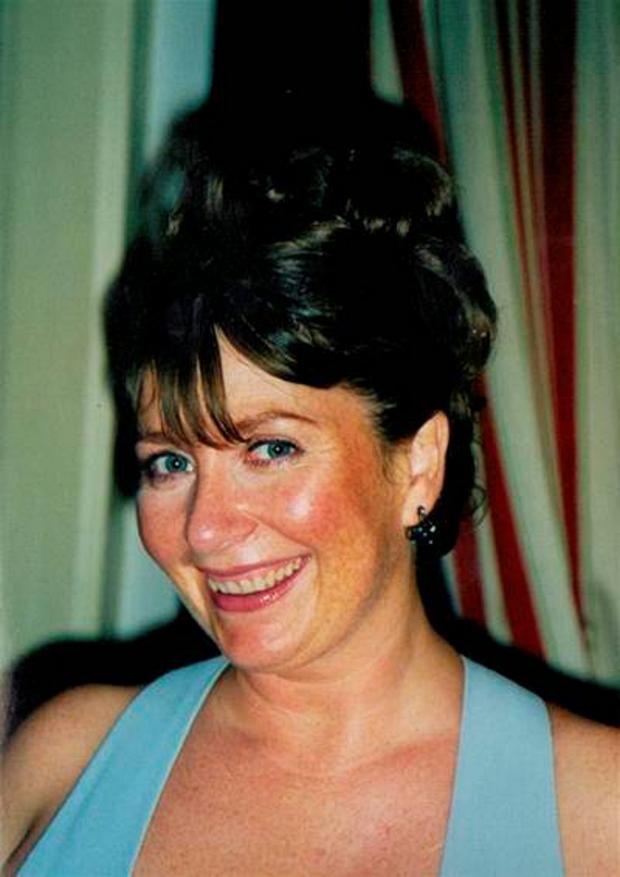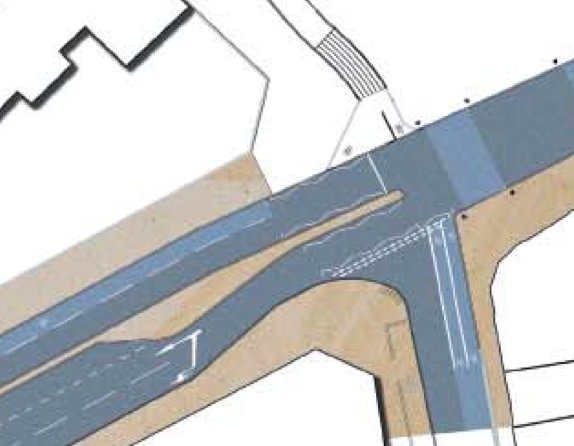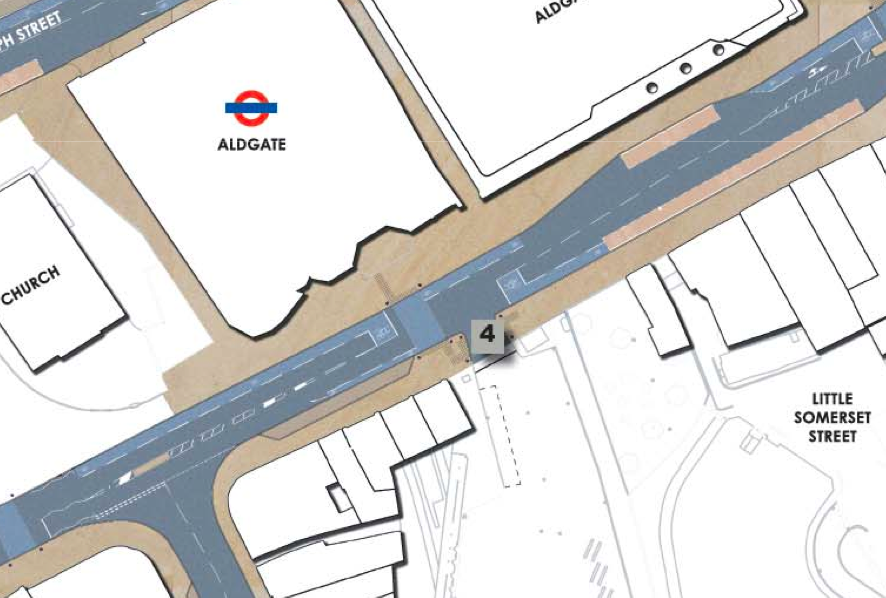"And that's why we don't just need 'infrastructure'. We need joined-up infrastructure ..."
David Arditti has previously told me: "We all believe in defining the network and then developing it gradually."
If this was universally the case, I wouldn't fret about it nearly so much. But it isn't. I am aware of only one municipal authority which has properly identified all of the routes which it thinks should make up its strategic cycle network, and that is
York (map
here).
We can
bemoan the lack of quality in some of the routes until the cows come home, but the fact of the matter is that the "new" York strategic cycle network is going to have good connectivity, good density, routes which are direct and routes which go to the places that people most want to go to.
As I say, I am not aware of any other municipal authority which has identified such a comprehensive and city-wide cycle network, and I have to wonder, why don't we ever think about that?
To give you just one example, the "cycling city" of Bristol, with a population nearly three times larger, has recently launched a network comprising eight arterial routes into the city (
map) [pdf].
The problem is that the majority of UK towns and cities find themselves in a bit of a predicament, in the sense that many of the most meaningful and the most direct routes are also the very same ones which are the busiest with heavy traffic. If they are to be useful to cyclists, routes need to be meaningful and direct. However, they also need to be safe and comfortable.
The difficulty is that making main road routes safe and comfortable for all cyclists is not something which can be done with a flick of a switch. What to do, therefore?
* * *
In a recent blog on
Aldgate, Mark Treasure reported: "The City of London, it seems, is adhering to a two-tier strategy, where children and the elderly (and, frankly, anyone who doesn’t fancy riding on busy roads) will have to stick to ‘Quietways’, while the ‘Superhighways’ remain the preserve of the existing, confident cyclists."
Westminster City Council have recently produced a working draft of their
cycling strategy for 2013-2026. It says: "Fear of injury is the most commonly cited barrier to cycling, particularly amongst non-cyclists [...]. The Council will therefore aim to deliver a range of improved routes for cyclists of different abilities."
Both the City of London and the City of Westminster are pursuing a strategy which is entirely consistent with the Mayor's
Vision for Cycling. As he explains in the Foreword:
"As well as the admirable Lycra-wearers, and the enviable east Londoners on their fixed-gear bikes, I want more of the kind of cyclists you see in Holland, going at a leisurely pace on often clunky steeds. I will do all this by creating a variety of routes for the variety of cyclists I seek.
"There will be greatly-improved fast routes on busy roads for cyclists in a hurry. And there will be direct, continuous, quieter routes on side streets for new cyclists, cautious cyclists and all sorts of other people who would rather take it more slowly."
So we're going to have two different networks for two different types of cyclist. Okay? The rationale, of course, is that some cyclists value off-road and backstreet options, and some cyclists prefer to be able to go quickly using the most direct route. By providing choice, each type of cyclist can choose the route that suits them best.
However, consider this
criticism of dual networks by Kim Harding, who is based in Edinburgh:
"Why isn’t utility cycling taking off, when cycling is apparently booming? [...] Part of the problem is the 'dual network' approach. This is based on the idea that people will start off on the 'family network', which caters for 'less confident cyclists', and then, as they gain confidence (and maybe have some training), they will 'graduate' to using the 'Quality Bike Corridors'."
(In London, for 'family network', read 'Quietways'; for 'Quality Bike Corridors', read 'Cycle Superhighways'.)
Whilst it is assuredly true that experienced cyclists value more pleasant alternatives as long as they are reasonably direct, it is also true that less experienced cyclists are uncomfortable sharing the road with heavy traffic.
* * *
According to
The Cycling Dutchman, Eric van der Horst, the successful cycling model of The Netherlands is a mix of both sharing the road and segregated cycle paths alongside busier roads. He explains: "It will always be a
combination of “sharing the road” and “segregated” models. It can never be one or the other."
Incidentally, I was interested to read another of Eric's blogs entitled
Just a different lick of paint! He notes that an essential ingredient of the share-the-road principle is the slowing down of motorised traffic, and that this can often be achieved simply and cheaply by painting the road surface in a different way.
|
|
The picture on the left shows a typical UK-style road. Many equivalent-sized
roads in the Netherlands, carrying similar volumes of motor traffic,
used to look the same.
|
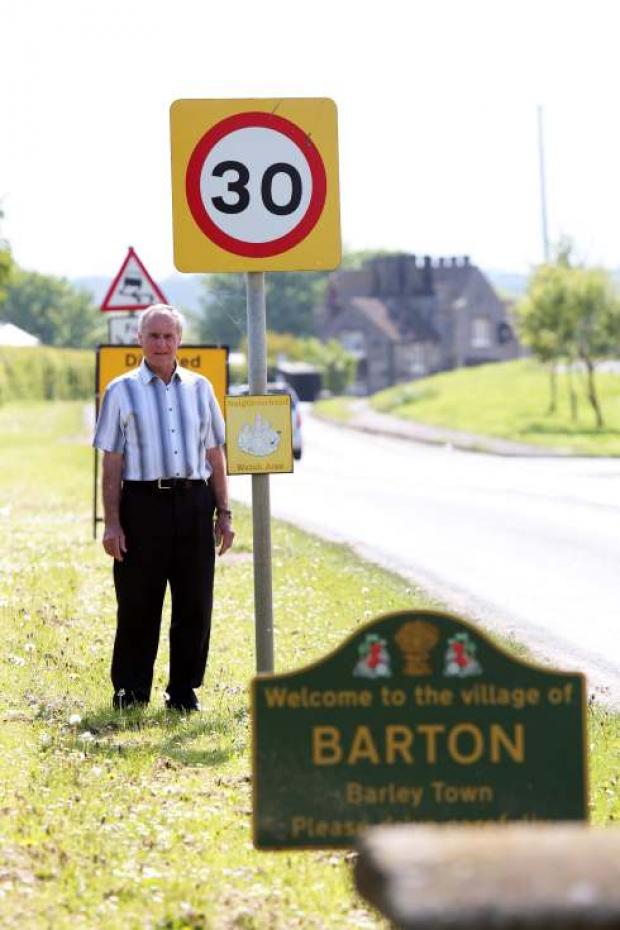
Rachel Aldred told a GLA committee hearing that where there is free-flowing traffic, 50% of the cars travelling along a road with a 30mph speed limit will be speeding. Why? Because, says Eric, that white line running down the middle of the road says they can. In practice, it doesn't seem to make a great deal of difference what the sign says. To the driver of a car, these signs are a poor '
nudge' (speed cameras are barely better). What that white line basically says is: As long as you stick to
your side of the road, you should be able to avoid any oncoming traffic. It doesn't really say anything at all about having to share this space with other, more vulnerable users.
The message that UK-style roads gives to many cyclists is this: You're not welcome! You don't belong here! Start paying road tax! Get out of the way! Vrrroooom!
"... I ride just to feel a buzz.
And it annoys me that some people look at us
like we are doing something wrong,
as we ride along a path where the marks say we belong.
I'm not a trouble-maker or a troubled teenager
just because I ride;
the world outside is mine as well:
I own these roads outside as well."
(Hollie McNish,
Why we ride: a film by and for Cambridge's young riders)
In the Netherlands, when the road needs to be resurfaced, it is put back differently. By consistently applying this strategy over a long period, a remarkable transformation of the cycling environment has been accomplished. The road layout pictured here not only assures cyclists and drivers that this is a shared space, it also helps to modify driver behaviour.
Dutch cycling infrastructure and road calming are the result of a 40-year evolution, and Dutch people are completely accustomed to it. British people have been brainwashed by five decades of motorised priority, says Eric, and generally have a low opinion of cycling and cyclists. "This means that many Dutch concepts will need to be adjusted to the UK situation and
carefully introduced."
* * *
During the course of my research into this subject, I came across the
Cycle Network and Route Planning Guide [pdf]. Published by the Land Transport Safety Authority of New Zealand in 2004, and peer-reviewed by Søren Underlien Jensen of
Atkins Global Consultants (Denmark), its aim is to promote a consistent, "world’s best practice" approach to cycle network and route planning.
Substantially, the guide is made up of two parts: the principles and the process. I am just going to have a look at the first part, and to bring to your attention those things which caught my eye.
Cycle network planning, it says, is a process of improving community mobility by providing interconnected routes and facilities based on bicycle users’ needs.
Cycle route planning, therefore, aims to provide cycle routes that:
• convey cyclists safely, comfortably and conveniently for the greater part of their journey; and
• minimise conflicts with other users.
It involves the organisation of the most appropriate facilities and treatments. These can often differ, depending on the environment through which the route passes.
Strategic cycling plans need to address the four Es—engineering, education, enforcement and encouragement. Typically, the aim is to increase the number of cycle trips whilst reducing cyclist injuries. Because traffic dangers deter cycling, improving cycle safety is an essential part of cycle promotion.
Depending on the circumstances, reducing traffic volumes and speeds may do more to improve the safety of cyclists than providing dedicated facilities. Thus, whilst the development of a strategic cycling plan would help to raise the profile of cycling, it is likely to be most effective as part of an overall Integrated Transport policy.
Even so, it may be fairly said that the quality of provision for cyclists reflects the commitment to increasing cycling’s share of total journeys. Lower quality facilities require more skill to negotiate, and would therefore do little to attract new, less confident cyclists.
* * *
Cycling generally has two main purposes: utility and leisure.
Utility cycling involves making a journey for the main purpose of doing an activity at the journey’s end, such as work, education or shopping. Time is often an important consideration.
Leisure cycling is done for the journey itself. Leisure cyclists include sports training cyclists, recreation riders and cycle tourists. They also include children playing on their bikes near their homes.
The LTSA report says that for the purpose of planning, cyclists may be grouped into three skill levels:
• child/novice;
• basic competence; and
• experienced.
Child/novice: Depending on their age, children have serious knowledge, perceptual and cognitive limitations in relation to roads. They can be unpredictable, do not have a good appreciation of road hazards and are generally unfamiliar with road rules.
These cyclists most commonly ride to school, to the local shops, and for recreation near their homes. This local environment should be safe for them. They cannot safely interact with traffic apart from on traffic-calmed neighbourhood roads. They prefer full separation from other traffic if travelling along busier roads and grade separation or traffic signals for crossing them.
Basic competence: With appropriate training, children are able to achieve basic competence from about 10 years of age. Their utility trips generally extend further than their younger counterparts, to secondary schools, say, or to leisure and sporting amenities.
These cyclists are able to ride on quiet two-lane roads, manoeuvre past parked cars, and merge across and turn right from beside the centre-line. They can cope with simple traffic signals and single-lane roundabouts that are well designed to slow through-traffic.
On busier roads they prefer cycle lanes and facilities at junctions. They are not equipped to interact with faster traffic, multi-lane roads and multi-lane roundabouts. They usually lack the confidence to defend a lane in narrow situations.
Strategic cycling plans should consider whether or not it is practical to design facilities so that they are suitable for cyclists of basic competence. If not, more advanced training from about the age of 13 could be beneficial.
Experienced: These cyclists have usually learnt by long experience how best to interact assertively with traffic. They typically make longer commuting trips, sports training rides and even cycle touring journeys. (Image from London Cycling Campaign.)
They do not require specific cycle facilities. They can defend the primary position where there is not enough room, judge the right-turn across fast-moving traffic, use multi-lane roundabouts (sometimes apprehensively), and tend not to divert onto cycle paths.
Incidentally, this list is incomplete. What, for example, are we to make of the cyclists shown in this picture? (Image from ibikelondon.) Are they 'basically competent' or 'experienced'? I would suggest they are neither one nor the other, but rather, somewhere in between (i.e. 'competent').
The LTSA report came out two years before Roger Geller published his
taxonomy of cyclists. The following summarises the key features of a group of cyclists described by him as 'The Enthused and Confident':
• They are comfortable sharing the roadway with automotive traffic, but they prefer to do so operating on their own facilities. They appreciate bicycle lanes and 'bicycle boulevards'.
• They have been attracted to use a bicycle for transportation purposes following the construction of Portland’s "bare bones infrastructure".
• This enthused and confident demographic of cyclists are the primary reason why measured bicycle trips on Portland’s four main bicycle-friendly bridges saw more than a 300% increase in daily bicycle trips between the early 1990s and 2006.
• They make up perhaps 7% of the population.
* * *
Cycle routes should provide:
• safety
• comfort
• directness
• coherence
• attractiveness.
Safety
Cycle routes should be safe, provide personal security, and limit conflict between cyclists and others.
Traffic speed and volume affect cyclists’ safety. As these increase, it may be more desirable to separate cyclists from motorists. Safe provision at intersections is crucial.
Cyclists should always have available a convenient route that provides a high level of personal safety. Routes used at night should have lighting.
Cyclists’ perceptions of safety are important. Appropriate infrastructure standards and design will help cyclists feel more secure.
Comfort
Cycling routes should be smooth, non-slip, well maintained and free of debris, have gentle slopes, and be designed to avoid complicated manoeuvres.
Directness
Cycle routes should be direct, based on desire lines, and result in minimal delays door-to-door. Parking facilities should be in convenient locations.
Indirect cycle routes or excessive delays may lead cyclists to choose more direct routes with greater risk.
Coherence
Cycle routes should be continuous and recognisable, link all potential origins and destinations, and offer a consistent standard of protection throughout.
To be recognisable, cycling routes should use consistent standards and design.
Attractiveness
Cycle routes should integrate with and complement their surroundings, enhance public security, look attractive and contribute in a positive way to a pleasant cycling experience.
* * *
When it comes to route selection, what are the relative advantages and disadvantages of choosing one route over another? I won't go through the entire list, because it's quite a long one; but I will consider what the report has to say about main roads and back streets.
Main roads are generally well used by cyclists, and have several benefits for those with experience enough to be able to use them confidently. Most main roads are flatter than the surrounding local roads, and have better surface conditions and maintenance standards. They are also coherent and direct, and favour the major flow of traffic.
Main roads often have safety advantages for competent cyclists, but high traffic volumes and speeds make them unattractive for less confident cyclists and for those who ride for pleasure. Even where cycle lanes are provided, main roads are unsuitable for children and novices.
The main constraints to developing high-quality cycle routes on main roads are a lack of sufficient space at junctions, parking demands, and conflict with adjacent commercial activities. The trade-offs may involve politically unpalatable decisions.
Back street cycle routes can work well on grid-based road systems, since most destinations would still be directly accessible when using them. However, as a general rule, alternative routes merely supplement the main road routes, and rarely eliminate the need for cycle provision on the latter.
Many cyclists undertaking inter-suburban trips prefer quiet routes, especially if they are not confident mixing with busy traffic. Local roads can provide for these, and commuter cyclists are prepared to use them, but only if they make for a more convenient, more direct journey.
* * *
The report also sets out a process for deciding what cycle provision, if any, is desirable, and where it is needed. Many factors influence whether roads or paths best suit cyclists’ needs, the report says. For example:
• Increased segregation from motor traffic is usually accompanied by increased interference from pedestrians, pets, skateboarders, slower cyclists, etc.
• One choice is not inherently safer than another; both can be hazardous and both require high-quality design to achieve safety—‘the devil is in the detail’.
• Paths tend to be safer between intersections, whereas cycling through a junction on the roadway is generally safer than from a path.
• Geometric design standards for roads are often higher than for paths.
• It is incorrect to suggest that roads can only satisfy commuters’ needs, or that paths cannot satisfy commuter cyclists’ needs. Most leisure cycling takes place on roads, and many commuters enjoy well designed paths.
• It is usually easier and less expensive to accommodate the needs of commuter cyclists on roads than on separate paths.
• It is difficult to provide a coherent and direct path system that is as convenient for commuters as the arterial road network.
• Where origins and destinations are on the same side of an arterial road, a two-way cycle path means cyclists don’t have to cross the road twice to get there. However, such two-way paths are generally not recommended.
Relative advantages
Subject to appropriate design standards being achieved, roads generally have the following advantages over paths.
They are:
• direct
• coherent
• convenient
• efficient
• available everywhere
and also:
• have established intersection controls
• serve well the needs of experienced cyclists
• have high levels of surveillance and therefore personal security.
Between intersections, isolated paths generally have the following advantages over roads. They have:
• no motor traffic
• slower speeds
• low stress
• an attractive environment
and also:
• provide extra links that advantage all cyclists
• serve well the needs of novice/child cyclists.
Depending on the circumstances and design detail, there is usually no clear advantage between roads and paths in relation to:
• safety
• conflict with other users
• expense
• maintenance
* * *
Different people reading this would have picked up on different things, but this is a blog about dual networks, and that being so, I would like you to consider what I think are four very important points:
i. Typically, the aim [of a strategic cycling plan] is to increase the number of cycle trips whilst reducing cyclist injuries.
ii. Strategic cycling plans should consider whether or not it is practical to design facilities so that they are suitable for cyclists of basic competence.
(Local cycle plans, of course, are something else.)
iii. Indirect cycle routes may lead cyclists to choose more direct routes with greater risk.
iv. Alternative routes merely supplement the main road routes, and rarely eliminate the need for cycle provision on the latter.
* * *
I feel I must say a word or two about the recent cycling fatalities, though I do so recognising that we can't just keep talking about it. At some point we actually have to start doing something. You know?
Just over a week ago, I left
a comment on the Cyclists in the City blog:
"It can be predicted with a fair degree of statistical certainty that within the next four weeks a cyclist will be killed in London. What can not be predicted is where this fatality will occur. It could be anywhere. So yes, don't ever hold back from making things safe just because the places we don't improve will be relatively less safe. Indeed, we must do as much as possible as quickly as possible.
"By necessity, and as a rule of thumb, this would mean accepting interim measures..."
Now, the problem is that the LCC, and their supporters, take the view that doing something, however small, "does NOTHING to improve cyclists' safety in any way."
Clearly they're not permaculturists. It seems to me, however, that as a consequence of this way of thinking, the focus of our attention has been allowed to switch from thousands of small initiatives to a few grandiose engineering schemes. As The Ranty Highwayman pointed out in
this comment on the Cyclists in the City blog: "Our casualty-reduction budget under Boris [...] is almost a third of what it was under Ken—the Mayor seems to like his big schemes and likes the boroughs to have big schemes."
I am certain that, to some extent at least, this is a response to the if-you're-going-to-do-something-then-do-it-properly attitude expressed by many, nearly all cycle advocates.
I did another Google search on this, by the way, and it threw up a blog by
The Turtle Bear. She is married now, with two sons, but she grew up in a household where both parents were undiagnosed OCD, and where order and organisation were
de rigeur. "I didn't think it was odd," she writes, "because I knew nothing else."
She goes on to explain that a few years back she went to a seminar on Time Management. Within the first couple of minutes, the instructor brought up the idea of 'if you're going to do something, then do it right', and asked the audience if they had ever been told this. She continues: "Most of us nodded. He said that it was DEAD WRONG. He suggested that instead we should substitute the following: "If you're going to do something, then do it." Leaving off the "right" alluded to the fact that it's better to get something done than to leave [it] undone just because you can't do it "right" or perfectly [the first time around]. One would hope that this epiphany would have changed my life, but old habits die hard."



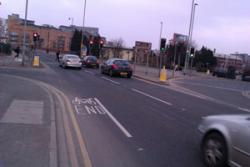


.JPG)
